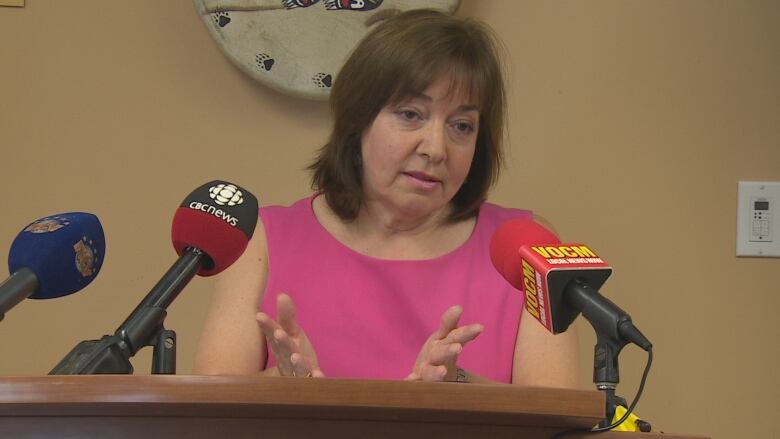A short, traumatic life: N.L. failed child who died, says advocate
Child suffered violence, neglect despite department intervention

The provincial child and youth advocate is taking aim at gaps in the child protection system in a new report about an unnamed child who died after a short, traumatic life marred by violence and neglect.
Jacqueline Lake Kavanagh would not reveal the name, age or gender of the child, whose brief life she scrutinized in the report called No Second Chance.
She also wouldn't disclose how the child died, except to say it was a "tragic incident" in which the child's mother and the mother's boyfriend also died.
"It was a very difficult investigation to do," Lake Kavanagh said.
"There was a lot of instability in the home.The mother was really struggling."
Lake Kavanagh says the child endured trauma, abuse and frequently changed schools all despite coming into contact with the Department of Children, Seniors and Social Development.
She made four recommendations all of which were accepted by the department including quicker access to mental health care and better communication between social workers and the courts to ensure children's safety.
History of violence
The department was first contacted when the mother was arrested for impaired driving and drug possession, nine months before the child died.
Social workers later learned the mother's boyfriend had a history of violence and was abusive to mother and child.
For six months, the child lived in a foster home but was returned to themother, who by then had moved in with her parents.
According to the report, the department believed the new living arrangement was a "protective factor" and that the child would be safer with grandparents under the same roof.
In many situations with children, there are no do-overs.There is no chance to get it right a second time.- Jacqueline Lake Kavanagh
It didn't work as expected. Part of the plan for reunification was a stipulation that the boyfriend not be in the child's presence. So the grandparents refused to let him in their house, but felt powerless to stop the mother from taking the child elsewhere with her boyfriend.
"It was very confusing for the grandparents because they had understood one set of rules and what they were expected to do, and they fulfilled that. The department of Children, Seniorsand Social Development had another set of expectations." Lake Kavanagh said.
The advocate recommended the department work with familiesto complete more thorough reunification plans so that all members clearly understand their roles.
She also recommended the department "review and document status of existing court ordered conditions including non-compliance."
In this case, Lake Kavanagh said, there was evidence of communication breakdowns between the court and caseworkers, so that no party had the full picture of life at home for the child and whether court orders were being upheld.
"All of that information was not clearly and explicitly stated to the court," she said.
"It is really, really critically important to look at those court orders."
Long waits for counselling
It was obvious, the advocate said, that the child in question had lived through several traumatic events not only violence and neglect, but frequent moves, time in a foster home and several starts at new schools.
The child was placed on a waiting list for counselling with an expected wait of six months. The child died before any appointments took place.
- Child Advocate wins battle for mandatory reporting of deaths, critical injuries
- Changes to child protection act greeted with cautious optimism
Lake Kavanagh made two recommendations on access to mental health care for both children and parents.
"The interventions need to be provided to the child, absolutely. But the interventions also need to be applied in parallel, and offered and available to the parent or the parents," she said.

Recommendations accepted
The provincial government's response to Lake Kavanagh's recommendations is included within the report.
All four recommendations have been accepted, and the Department of Children, Seniors and Social Development says it is using new practices to enhance child protection.
"Were going to be watching to see how this works and I'm hopeful, but the proof will be in the pudding," Lake Kavanagh said.
While nine months is a relatively short time for the department to be involved in a case, the advocate said more could have been done to improve this child's life.
"I think it was a missed opportunity. The child subsequently died," she said.
"In many situations with children, there are no do-overs.There is no chance to get it right a second time."
With files from On The Go












_(720p).jpg)


 OFFICIAL HD MUSIC VIDEO.jpg)
.jpg)



























































































